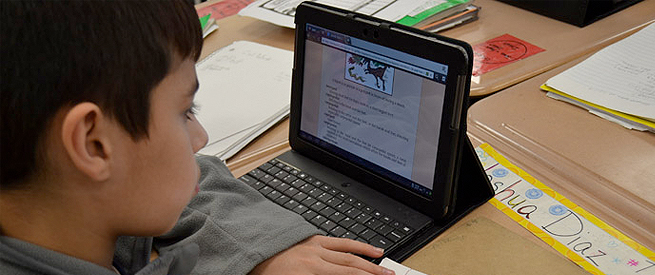
Together with Project Tomorrow®, a national education nonprofit, Kajeet conducted a year-long study on the impact of mobile devices on teaching and learning. The Making Learning Mobile study took an in-depth look at the impact of 1-to-1 tablet implementation -- including off-campus access -- in two very different school districts: Chicago Public Schools and Fairfax County Public Schools. The project was sponsored by Kajeet with funding from Qualcomm’s Wireless Reach.
Below is the summary from the report.
The Making Learning Mobile Project provided ubiquitously connected 3G mobile devices to 136 low income students with limited to no internet access at home and their four classroom teachers. All participants attended or taught at Laughlin Falconer Elementary School, a technology magnet cluster school in the Chicago Public School system. This project focused specifically on four 5th grade classrooms. Ninety-four percent (94%) of the students at Falconer Middle School come from low-income households with low rates of home Internet access. The project sought to examine the effect of access to 24/7 mobile devices on the learning experience both at school and at home. Specifically, 24/7 use of the tablet was monitored to understand how the use of the mobile device extends the learning day; which learning activities is the tablet used for; and students’ overall digital citizenship level and comfort with technology.
Challenges
Many students from low income households do not have access to digital devices or the Internet outside the school. This can limit the student’s ability to complete homework tasks and participate in self-directed learning exercises available through the Internet.Traditionally, even in technology-focused schools, mobile devices are not permitted for home use.
Most of the 136 5th grade students in this project do not have adequate access to technology devices and the Internet and are limited in their ability to complete learning tasks outside of the school day, such as conducting online research to complete homework assignments, playing educational games or supplementing their learning with remediation or enrichment activities.
Through the Making Learning Mobile project, 136 fifth grade students and their four classroom teachers received a personal ubiquitously connected 3G tablet for use at school and home.
Messaging, email and chat availability was enabled on each device, facilitating improved communication between students, parents and teachers.
Technology
3G tablet

